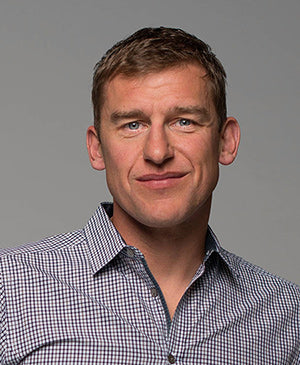By Matt Dixon, coach and founder of Purple Patch Fitness
Above almost all other subjects, performance nutrition tends to elicit the most angst and confusion for many athletes. It is a polarizing subject, prone to fad diets, promises of quick hacks and wonder detoxes, and in the same publication we are often told that sugar is the devil while later we are reminded that our "engine's fuel" is a carbohydrate.
Beyond the confusion, the desire to create a smart approach for your needs can often drive you to over-complication, granular detail and even an overly emotional attachment to food. I seldom meet an athlete who has it all dialed in with positive habits, and over the years I have learned that for most athletes, success is typically built on a little framing and education, as well as a few basic habits to adhere to.
Success isn’t about obsession, weighing food or restricting yourself to living like a monk. Nail the basics and you are usually in a good spot.
Let’s explore.

Positioning the Pillar of Nutrition
Before diving into the details, it is important to position nutrition under the umbrella of performance evolution. The driving force behind massive performance gains is a simple guiding methodology that we call, for education purposes, the Purple Patch pillars of performance. These combine to create something very simple:
When we apply smart and appropriate endurance training that includes integrated functional strength, and then has a backbone of great habits in nutrition and is supported with appropriate recovery; athletes accelerate.
No matter the level of athlete or enormity of their goals and aspirations, we consistently see this ring true. It is not enough to have a singular mindset to improve performance long-term. Just because you eat well, you will not improve body composition if you are consistently under slept and over-stressed. Equally, you may have the best training program out there, but inadequate recovery and poor habits around fueling and nutrition will be your undoing.
Whether you’re a fitness enthusiast or spend your days chasing a world championship title, these pillars are the backbone of your performance gains. And so, when we discuss the big topic of nutrition we must do so within this context. It is not mutually exclusive and without influence from the other key tenants of improvement. We are simply isolating and dissecting, and when done evaluating will swiftly place it back in our global lens of performance.

Breaking Apart the Components of Nutrition
As an educational tool I find that a successful approach to nutrition is to break apart the components and set up habits for success in each. This helps develop a filter on the information you need and allows you to judge within context of the role of each area. At Purple Patch we have four main categories under the nutrition pillar:
-
Fueling: The calories you consume during and immediately following training.
-
Nutrition: Your main platform of healthy nutrient rich food — breakfast, lunch, dinner and snacks.
-
Performance Hydration: fluids consumed during training and racing.
- Daily Hydration: Fluids consumed throughout the day and outside of activity.
This approach helps athletes avoid confusion and make best choices for the situation they are in. For example, in racing situations (fueling) sugar is typically good, but it is terrible as an afternoon snack (nutrition). In other words, the needs and rules vary depending on situation. This clarity can help decision making. Yes, I believe in boiling down complex to simple and approachable.
While it is impossible to outline a complete approach to nutrition in the words I have available for this article, I can instead provide the ‘headline news’ for each area so that you can begin to define habits and areas of focus.

Fueling
Your most important performance habit in the area of nutrition is post-workout fueling. In fact, I would argue that a string of energy and recovery consequences, and poor decision making, often stem from poor post-workout fueling.
You will want to nail down great habits in this area:
- Always consume calories within 30 minutes of training. Every time. Make it a habit.
- Post-training fueling can typically be real food with a main focus on carbohydrate and protein. Avoid too much fat as a ratio of post-workout fueling.
- Workouts less than 60 minutes do not require caloric support. Don’t let anyone claim otherwise.
- Workouts more than 60 minutes typically benefit from caloric support:
- High intensity and intervals rely on carbohydrate / sugars.
- Longer endurance and low intensity can use ‘real food’ with mixed macronutrients.
- Race fueling must be tested and practiced. Do so in the sessions that most simulate race intensity and environment.
- It is typically better to be slightly under-fueled when racing than overconsuming and in G.I. distress.
- No, you don’t need to consume race fuel in every session.

Nutrition
For an athlete, proper nutrition is built on a platform of great fueling habits. It all goes south if your fueling is poor, as the resulting ‘athletic starvation’ tends to lead to poor nutrition choices, over-eating relative to needs, poor recovery and energy fluctuations.
Beware of fad diets, instead center around some basics:
- Plenty of high quality fats and oils.
- A good quality protein source with eat meal
- Copious colorful vegetables and some fruit.
- Generally taper calories throughout the day - yes, breakfast is the most important meal of the day.
- Starchy carbohydrates should be in most meals, but the largest ratio in the mornings — then taper throughout the day.
- Smaller and consistent meals are preferred over great excess and starvation over only a couple of daily feeds.
- Sugar and sports drinks and fuel have no place in your daily nutrition.
- Beware of shakes and energy bars. That isn’t real food.
- If you seek improvements in body composition then a small caloric deficit should occur in your nutrition, not your fueling, and if proper habits are followed then a reduction in evening starch is appropriate.

Performance Hydration
The role of hydration is to maintain blood volume to ensure optimal oxygen delivery to the muscle, dissipation of heat and appropriate function of the G.I system. It also serves to dilute calories consumed for fuel and allows for appropriate absorption through the stomach and gut.
A few takeaways:
- Choose a hydration beverage that is a weak solution of carbohydrate (less than 4%) and includes electrolytes.
- Workouts under 60 minutes can be supported by drinking to thirst and utilizing plain water.
- Workouts longer than 60 minutes benefit from a specific and consistent strategy.
- Every time you consume calories support with hydration to enable some dilution.
- Drink frequent and often, it is preferred to infrequent gulps.

Daily Hydration
We must separate daily hydration from sport hydration, as your choice of fluid will be vastly different. We focus on hydration throughout life to restore hydration status from training, facilitate optimal recovery, as a platform of health and to manage daily energy levels. Yes, it is important, yet often neglected.
Here are a few rules:
- Avoid all sports beverages in daily hydration.
- Skip the high sugar drinks, including most juices and other fancy solutions that have ‘hidden sugar’
- Don’t disrupt sleep by consuming caffeine in the afternoon. If you get the afternoon slumps opt to raise core temperature by moving around and consuming a hot beverage without caffeine.
- Drink plenty. Two glasses of water with each meal and aim for a total of about 0.5 ounces per pound of body weight on a daily basis.
- Shift your lens on pee breaks. There are performance and health benefits when you move the body from the corrosive sitting position and circulate blood — a good thing.
If you can nail these basic habits you are 80% of the way to a smart and practical approach to nutrition. Yes, the final details of your solution may be a little more granular, and success for each athlete is certainly individual, but it is a failsafe framework to build on.

Dive Deeper
Want to hear even more from me on this topic? I recently produced four episodes of the Purple Patch Podcast on fueling, nutrition and hydration — so there is plenty for you to dig into.
Purple Patch Podcast
- Episode 11: Nail Your Nutrition and Fueling
- Episode 12: Nail Your Nutrition and Fueling – Part 2 with Kyla Channell
- Episode 14: Hydration Habits in Training, Racing and Daily Life
- Episode 16: Kyla Channell – Optimizing Hydration for Performance and Daily Life

Matt Dixon is a world-class triathlon coach, former professional triathlete, elite swimmer and exercise physiologist. His Purple Patch coaching community is based in San Francisco, but his athletes span the globe.
His professional triathlon squad has amassed more than 300 Professional wins and podiums in IRONMAN and IRONMAN 70.3 races, including the 2016 World Champion. He has qualified more than 250 athletes to the Hawaii IRONMAN World Championships, with multiple Age Group World Champions, but he is equally known for his groundbreaking work successfully creating performance in sport and life for time-starved individuals. He guides many leading CEOs of major companies, including well known tech industry leaders.
Matt is the author of the Well Built Triathlete, as well as the new Fast Track Triathlete, an IRONMAN U Master coach, global hydration advisor for Camelbak and a much sought performance expert and speaker.
